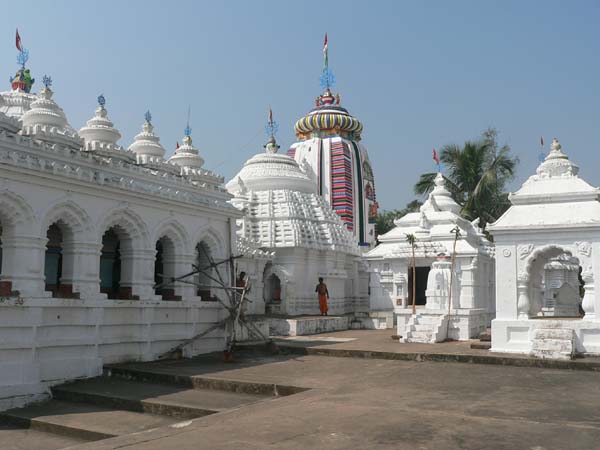Continued from here.
On the second day of our trip we had scheduled a visit to Kantilo on the other side of the Mahanadi and going straight to Ratapat from there for the festival itself.
We began our day by getting lost on our way to Kantilo. Luckily the detour was small as we found our way back easy enough. Crossing the bridge we laid eyes on Mankadagadia and continued on our way to our destination, which was the Neelamadhaba Temple on top of the Bramhadri and Niladri hills.
Kantilo is situated on the banks of the Mahanadi and was at a time considered a center of art for bell-metal artists. Some experts postulate that the name of the town itself may have come from the art (Kanti means old or broken bell-metal in Odia). These days bell-metal manufacture has declined a lot and some artists around Puri are the ones keeping the art alive.
The worship of Lord Jagannath is said to have been started from this place by the Sabaras, a pre-Aryan and pre-Dravidian tribe who worshipped a black tong image of Neelamadhaba. The wooden idol residing in the temple today is a much recent development.

Kantilo
Scholars do not have enough documentary proof to positively nail down the builders of the temple but enough archaeological evidence exists that points to the Bhanja kings, specifically Shatrubhanja I (who called himself Param Vaishnava) as the one who commissioned the building of this temple. This corroborates other scholars studying architectural styles who date the temple to 9th century AD. However the idol itself is supposed to be much older.
We did not spend much time at the temple as we still had an event to attend. While returning we stopped at Mankadagadia to look at the Jatra (play) being performed. After taking a few photos we started on the way to Ratapat.
We’ll be continuing this journey in another post as well as a few videos which will sadly not come until after New Year’s Day as all of us are off to our homes for the winter.
Please feel free to comment and share.
Embark on a spiritual sojourn through the pages of the Odia book “Kantilo: At the Feet of God.” Immerse yourself in the divine aura of Kantilo, a land where spirituality transcends earthly boundaries and devotion echoes in every heartbeat.
You can read our another post on Progress of Bee Keeping in Odisha
“Kantilo” delves deep into the mystical world of the renowned Kantilo Temple and its profound significance in Odia culture and religious history. The book takes readers on a captivating journey, unveiling the tales and legends associated with this hallowed destination.
Through poignant storytelling, the author reveals the extraordinary tales of devotees who have sought solace, redemption, and enlightenment at the feet of God in Kantilo. The book beautifully captures the essence of devotion, faith, and the spiritual quest that lies within every soul.
The vivid descriptions transport readers to the sacred abode, where the air is infused with devotion, and where traditions and rituals have been meticulously preserved for centuries. The author explores the temple’s architectural splendor, its serene surroundings, and the deep-rooted customs that continue to thrive in this spiritual sanctuary.
Kantilo: At the Feet of God” resonates with the timeless teachings of love, faith, and surrender. It offers a glimpse into the lives of ordinary people who have experienced extraordinary connections with the divine at this sacred pilgrimage site.
This book serves as a reminder that true devotion knows no bounds and that finding solace and liberation in the presence of God transcends religious and cultural differences. It invites readers to reflect upon their own spiritual journeys and the significance of connecting with the divine.
More: Wanted to download Odishashop.com visit here

